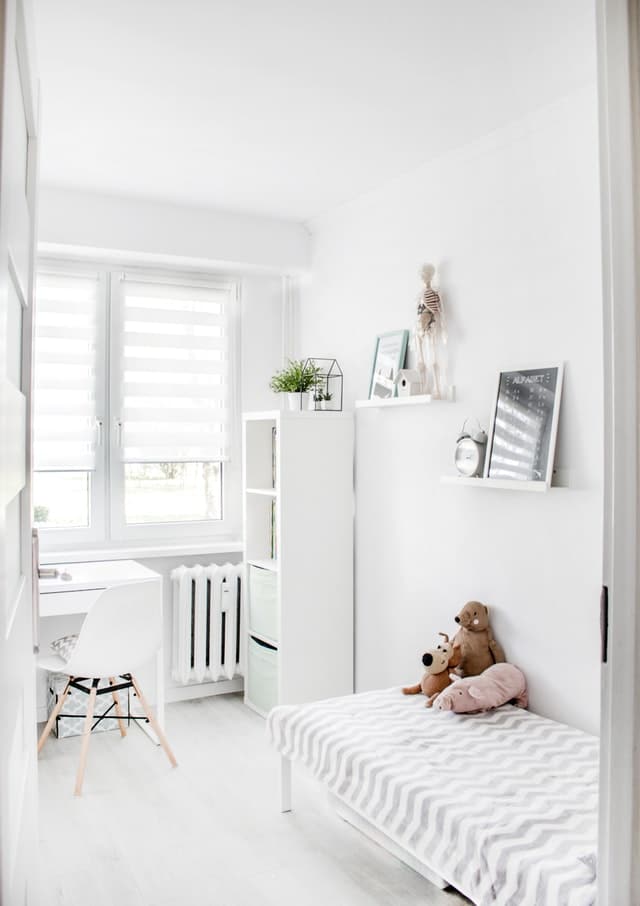5 Tips to a Healthier Home

Have you ever had health issues, been to your health professional and they say that there’s nothing wrong?
Or that your kids are often sick, but again, that is ‘normal’?
Have you ever considered that the health of your home may be a contributing factor?
Building biology is a specialty field that understands the link between health and the health of their homes. Because we spend much of our lives indoors in our homes, the environment that we live in affects our health – positively or negatively.
Living close to a freeway or busy road with increased pollution, or near a golf course that is sprayed with chemicals regularly, or close to mobile phone base towers emitting large amounts of electromagnetic radiation (or a combination of these) can contribute to poorer health.
Inside the walls of our homes may also lie other hazards. For example, in the past, lead was used in paint including the paints used in our homes. Lead is known to contribute to learning and behavioural issues in children living in those homes. Australia was one of the slowest countries to acknowledge this issue and remove lead from our paint slowly over many years – a known factor to contribute to health issues in children (and adults too), however the change was too slow.
When it becomes clear that there are negative health consequences for everyday products on the shelf or infrastructure, it may be inconvenient and costly to deal with it at a national level.
And we cannot wait for change at a national level. It’s up to us to be advocates for our health, but sometimes it’s hard to know what issues may be affecting our health – I mean, how do we know when we don’t know what we don’t know?!
While there’s quite a list of different indoor environmental factors that do affect our health, many we can do something about. Aside from lead paint which shouldn’t be an issue any more, dust, water damage and mould, electromagnetic frequencies from modems and smart homes, to name a few.
For anyone who has a chronic health issue, an autoimmune condition, recurrent illness, eczema, allergies or asthma, the health of our home is a key factor to be addressed.

If you have a chronic health issue, an autoimmune condition, recurrent illness, eczema, allergies or asthma, consider the health of your home.
And if you’ve tried dietary and lifestyle changes, are actively working on improving your gut health and you’re still not feeling any better, consider the health of your home.
Follow these five tips to creating a healthier home for you and your loved ones:
1. Mould
Mould and mycotoxins can be extremely harmful to our health. In the presence of ambient electromagnetic fields (EMFs) emitted from devices like iPads, phones and modems in our homes, and cell phone towers signals reaching into our homes mould can multiply hundreds of times faster. In addition, the mycotoxins they produce are more toxic to our health.
It’s therefore vital that any mould and associated source of moisture is addressed to optimise the health of you and your loved ones.
Aside from obvious mould that can be seen, how else do you know if you have mould in your home?
- Consider what you smell when you walk into your house or different rooms in your home? Is it musty or damp? This can be one of the signs of moisture leading to mould/mildew.
- Look for signs of moisture – e.g. peeling paint, is there adequate ventilation in the bathrooms?
- Ensure your bathroom fan is on when showering. Any windows should not fog when the fan is on – if so, open the window or install a stronger fan.
- Purchase an air purifier to remove mould and other airborne particles like smoke and dust.
- Seek advice of a building biologist to locate the source of moisture and advise on an appropriate remediation.
2. Electromagnetic Frequencies (EMFs)
Our world has significantly greater electro-pollution: it is a million times more today than it was only a few decades ago. EMFs affect our brain’s ability to detoxify and causes inflammation and oxidative stress at a cellular level.
- Keep devices such as phones, alarm radios, iPads and other devices out of the bedroom while you sleep and switch off at night.
- Switch off your modem at night while you sleep. Our brain is must vulnerable at night.
- Hardwire where you can.
- Learn how to hardwire and reduce your EMF exposure with The EMF Course
3. Room sprays
Commercial room sprays, wall plug ins, and candle melts release harmful chemicals into the air including potential carcinogens, formaldehydes, hormone disruptors and lung and eye irritants! These may contribute to headaches as well.
- The best remedy is to stop using these. If you want to use a replacement, make up a spray with water and a few drops of pure essential oils.
“Inside the walls of our homes may also lie other hazards. “
4. Dustmites
Dusting is not a favourite activity of mine, however dustmite allergies are common and can contribute to the load on our bodies. The dustmite allergy is actually an allergy to the dustmite faeces (yuk!).
In addition, high dust loads can make our health worse: mould likes dust and EMFs make mould mycotoxins more toxic… this cycle can exacerbate existing health conditions and create new issues.
While it is not possible to completely eliminate dustmites from your home, keeping the dustload under control is one way to keep these critters in check.
Take a look at your home: is there a high dust load on shelves and tables? (Swipe with a white tissue and see.)
-
Regular vacuuming with a vacuum with a HEPA filter – ensure that if it is bagged that you empty outside (not into your internal bin as this will re-release the dust back into your home)
-
Wash your children’s soft toys in hot water (55C+) with eucalyptus oil frequently
-
Don’t make your beds! (I love this piece of advice!) Throw the covers back to air daily – this reduces dustmites as they prefer the dark. If you must make beds, then allow them to air for a few hours before making them in the morning.
5. Keep the chemicals out of your home
Consider the contaminants and chemicals that you may already be bringing into your home already. These include any purchase of cleaning chemicals or personal care products but also some less obvious contaminants.
- Cross check the ingredients of any products you plan to purchase – are they safe for your children? Are they safe for you?
- Regularly ventilate your home – open your windows and doors to allow for cross-ventilation.
- Remove your shoes before you enter your home. Leave them in the garage, outside the front door, or in a dedicated area by your main access door. Just think about where you’ve walked in your shoes – public bathrooms, roads, grass or parks that might be sprayed with pesticides that you then end up tracking throughout your home.

The Happy Skin Collective for Eczema has curated eczema information, resources, step by step plans and the support you deserve so you can finally feel comfortable in your own skin.
Improving the health of your home is a step by step process. When we know better, we do better, right? Take one item on this list and take a week to assess and address. Without the overwhelm. One change per week is 52 changes per year!
Choose the quick wins… here are two quick suggestions:
Turn the modem off at night.
Shoes off at the door.
Let me know how you get on with those, I’d love to hear how you go with improving the health of your home to improve the health of you and your loved ones.
Change begins at home.
Protect your family from harmful EMFs with THE EMF COURSE: Your Journey to Creating Healthier Spaces

Melissa Raymond
7th November 2020





